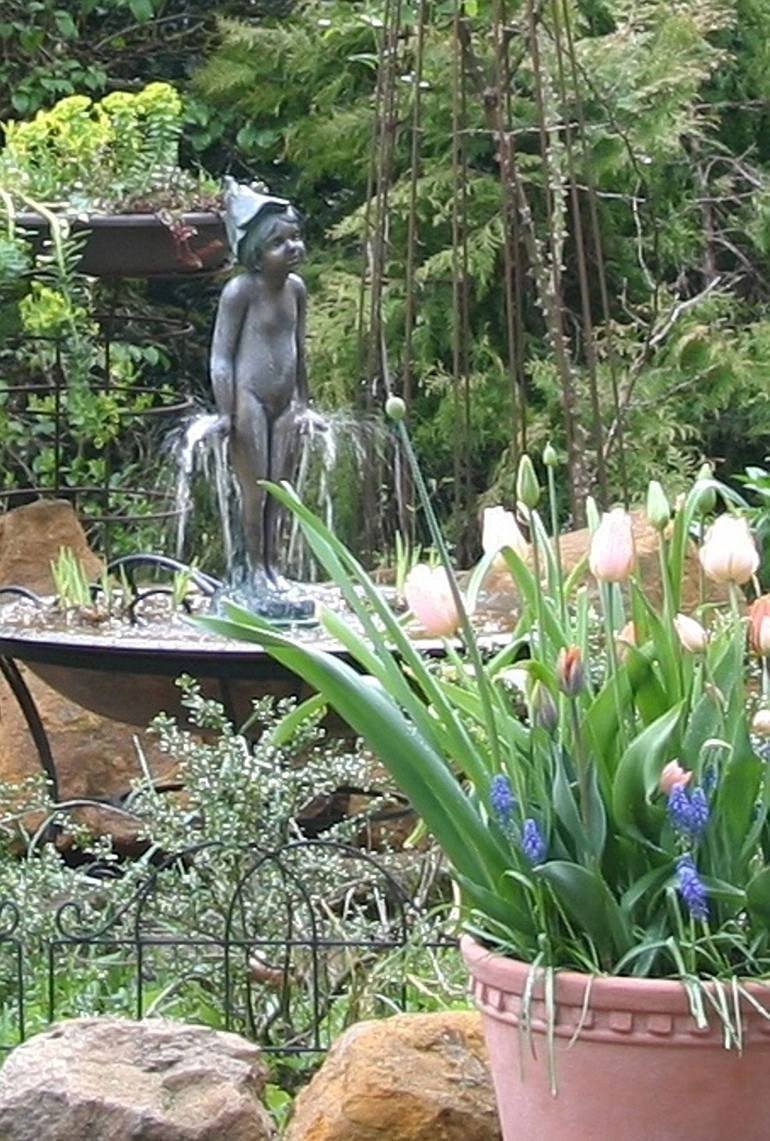Even established gardeners should occasionally look at their own gardens from a fresh perspective, as if visiting for the first time.
At least once a year, begin from the house and work your way out into the garden. Enjoy those areas of the garden that please you. Make a mental note of what looks and feels right and consider how you might repeat a similar effect in another part of the garden. A garden doesn’t have to be finished to be pleasing. On the contrary, the most interesting gardens are those that are ever changing.
Critiquing a creative project does not have to be a negative endeavor. Think of it as fine tuning, like detailing a classic car. Since the garden is a part of nature there will always be natural processes taking place. Wood will rot, iron will rust, weeds will grow and plants will die away.
Part of your inventory will be to tend, repair and replace what needs to be taken care of in the garden. To bring the process full circle, take a moment to see your garden through your own eyes and bask in the glow of all that you have accomplished so far.
Think beyond spring
It’s spring and the tendency when buying plants at this time of year is to add as much color as you can to garden beds and borders. But remember, you are planting your garden today for the entire year. Take stock now of what you would like to see in your garden during the hot days of summer, the cooling period of autumn and into the following winter. This doesn’t mean you have to give up on the glory of a spring garden. Definitely add a splash of color now with spring blooming perennials or a dramatic spring blooming magnolia. Every area of the garden should have some seasonal standouts.
As you take your garden’s spring inventory, consider adding at least one four-season plant to each area of your landscape. Four-season plants look good throughout the year. In addition, most of them have a specific seasonal impact as well. These plants can come in the form of trees, shrubs, ground covers or vines. A plant does not have to be evergreen to have four seasons of interest, although many evergreens do fit into this category. Some of the most beautiful garden images are created by the silhouette of deciduous trees and shrubs in winter.
Any variety of the evergreen shrub Pieris japonica makes a perfect background plant for more colorful, seasonal perennials in flower beds and borders. The new spring growth is worthy of interest, especially varieties that are noted for spectacular new leaf color such as “Mountain Fire” and “Valley Valentine.” The variegated Pieris japonica “Variegata,” also called Japanese andromeda, is a handsome, easy-going addition to the home landscape. It looks impressive when planted in groups of three or five or when planted in an off center line as an informal hedge.
“Boulevard” false cypress, Chamaecyparis pisifera “Cyano-Viridis,” is a wonderful, silvery-blue-toned conifer that fits into any size garden. Topping out at 8 to 10 feet tall and 4 to 6 feet wide, this pyramidal evergreen stands out in every season. Plant a bed of “Ice Follies” daffodils at its feet for early spring flower and watch how the creamy yellow blossoms pop out against the hazy, metallic blue backdrop. Surround the tree with tall, single white dahlias and listen to the oohs and aahs of visitors to your summer garden.
Divide, replant
If you have planted the wonderful early spring snowdrops Galanthus nivalis ssp., and if they are growing well, you will find that they spread every year, covering a larger area than the one in which you planted them. Now, while the bloom is on the plant and before the leafy stalk dies away in late spring, is the time to divide and replant them in other areas of the garden.
Dig deep enough to go under the rooted bulbs and lift the whole plant with a clump of soil. To divide, you won’t need to cut into the cluster at all, just use your hands to pull clumps of bulb and soil away from each other. Replant a part of this cluster in the original position and add the rest to another area of your garden. Snowdrops, with their dainty, hanging lantern flower blossoms, brighten up the garden path as well as winter weary spirits.
Robb Rosser is a WSU-certified Master Gardener. Reach him at Write2Robb@aol.com.



